
Home |
About Us |
How to Participate |
Biodiversity Modules |
Projects |
Maps |
News |
Resources

Home |
About Us |
How to Participate |
Biodiversity Modules |
Projects |
Maps |
News |
Resources
|
Definition of "Developed" - General Code 200: Significant human influence. Surface development includes buildings, pavement, etc. Excludes agricultural land and clear cuts. |
Developed: Medium Residential Density (221)
 | |
| Descriptive Habitat Code: This developed (2) habitat has 50% development (2) in a residential area (1). | |
| Photo: KMD | |
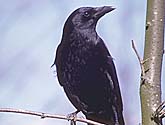 American crow Corvus brachyrhynchus Code: COBR Photo: RA |
Distribution and Habitat: It is found in a wide variety of natural and urban (developed) habitats. Diet: Interesting fact: |
 American robin Turdus migratorius Code: TUMI Photo: TFK |
Distribution and Habitat: In North America, American Robins breed from Alaska east to Newfoundland, Canada and south to California and east to Florida. The American Robin can be found in farmlands, suburbs and urban neighborhoods. Diet: Interesting fact: |
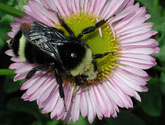 Bumblebee Yellow-faced Bumblebee Bombus vosnesenskii Photo: TFK |
Distribution and Habitat: Bumblebees are typically found in higher latitudes and/or high altitudes. They are commonly seen around fields and in flower gardens. Diet: Interesting fact: |

Dark-eyed junco Junco hyemalis Code: JUHY Photo: Natures Pics |
Distribution and Habitat: It is found in low to medium developed (urban) areas. Diet: Interesting fact: |
 Eastern gray squirrel Sciurus carolinensis Code: SCCA Photo: TFK |
Distribution and Habitat: It is found throughout deciduous woodland areas of North America as well as being a common inhabitant of developed areas of towns, cities, residential and even industrial areas. Diet: Interesting fact: |
 Honey Bee Apis mellifera Photo: TFK |
Distribution and Habitat: Honey bees are not native to the Americas but were introduced by European settlers. It is found across the state in fields and gardens. Diet:
Interesting
fact: |
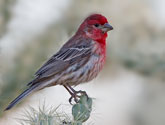 House finch Carpodacus mexicanus Code: CARME Photo: Natures Pics |
Distribution and
Habitat: It is found in developed (urban) areas. Diet: Interesting fact: |
 House sparrow Passer domesticus Code: PADO Photo: RA |
Distribution and Habitat: It is native to Europe and was introduced into the United States in 1850 where it has become a permanent fixture in developed areas. Diet: Interesting fact: |
 Long-toed salamander Ambystoma macrodactylum Code: AMMA Photo: WDFW |
Distribution and Habitat: It is found in semi-dry sagebrush areas, rocky shores of lakes, alpine meadows, and even developed areas, in rotting wood and under rocks near lakes, ponds, wetlands and other areas of standing water. Diet: Interesting
fact: |
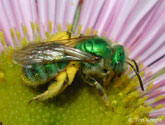 Metallic Green Bee Agapostemon Photo: TFK |
Distribution and Habitat: Metallic Green Bees are commonly found in meadows and gardens from Canada to Mexico. Diet: Interesting fact: |
 Northern flicker Colaptes auratus Code: COAU Photo: Natures Pics |
Distribution and Habitat: Northern Flickers can be found throughout most wooded regions of North America. Prefers forest edges and open woodlands approaching savannas. Diet: Interesting fact: |
 Raccoon Procyon lotor Code: PRLO Photo: KMD |
Distribution and Habitat: It is native throughout most of the United States and southern Canada, but has also been introduced into Europe and Asia. It is a common inhabitant of agricultural and residential areas. Diet:
Interesting fact: |
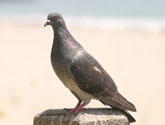 Rock dove Columba livia Code: COLI Photo: TFK |
Distribution and Habitat: It is found in most medium-sized and large cities of the United States and in the Columbia Basin. Diet: Interesting fact: |
 Steller's Jay Cyanocitta stelleri Code: CYST Photo: Natures Pics |
Distribution and Habitat: Pacific coast from southern California to Alaska; resident and breeding throughout it's range. The Steller's Jay can be found in mixed forests, hardwood forests, coniferous forest, residential areas, and agricultural areas in forested landscapes. Diet: Interesting fact: |
 Virginia oposum Didelphis virginiana Code: DIVI Photo: RA |
Distribution and Habitat: It is found in a wide variety of habitats, including temperate and tropical forests, mountains, grasslands and urban (developed) settings. Diet: Interesting fact: |
Home |
About Us |
How to Participate |
Biodiversity Modules |
Projects |
Maps |
News |
Resources